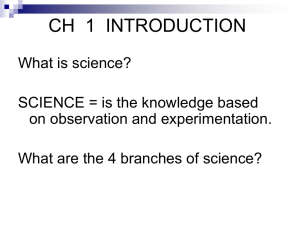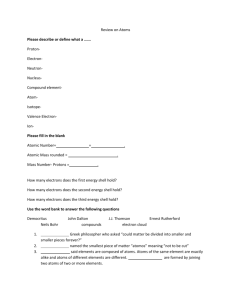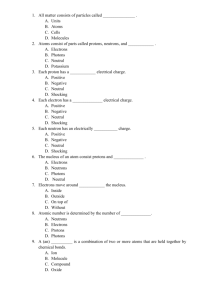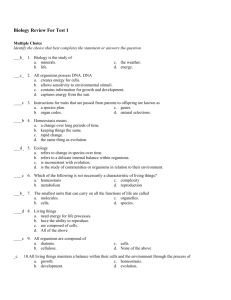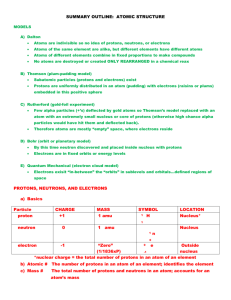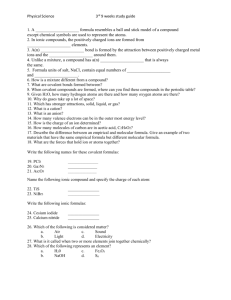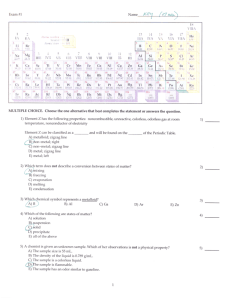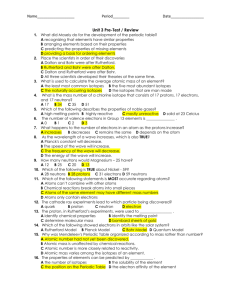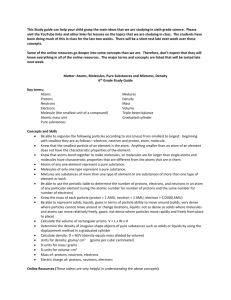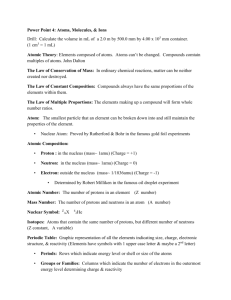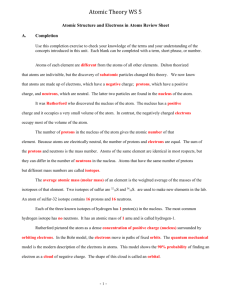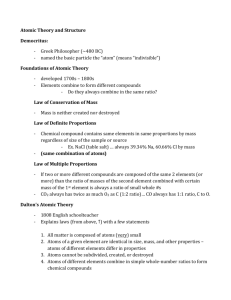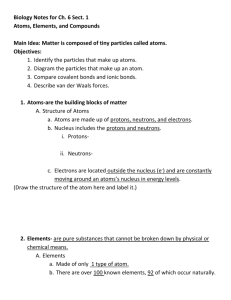Protons (atomic #)+
advertisement
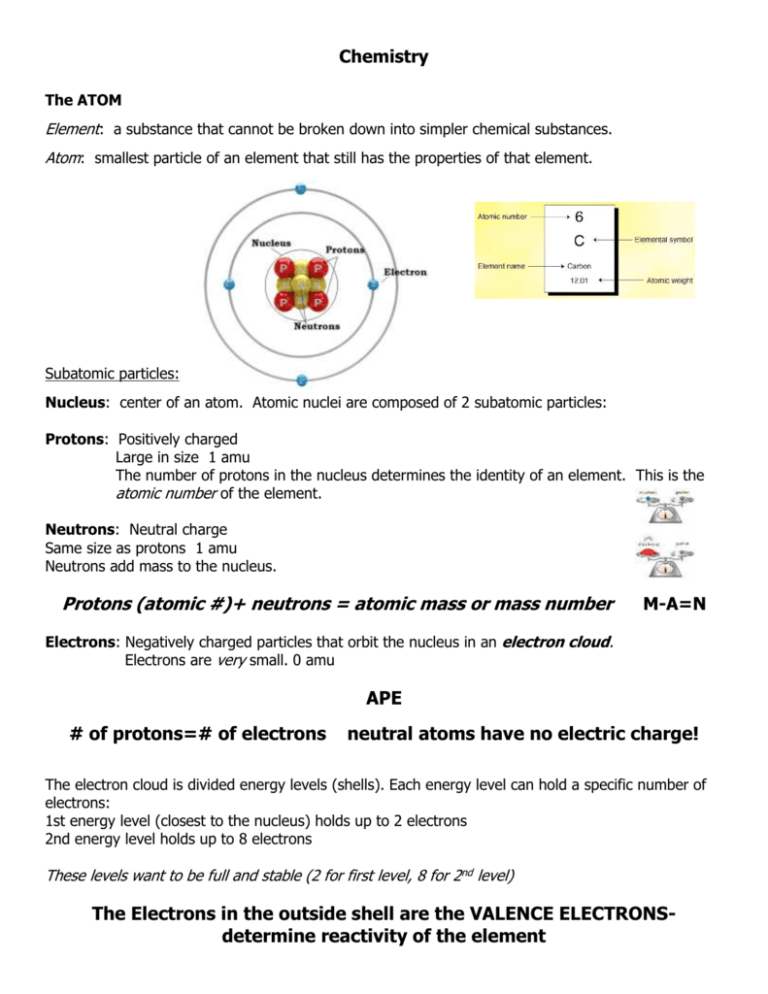
Chemistry The ATOM Element: a substance that cannot be broken down into simpler chemical substances. Atom: smallest particle of an element that still has the properties of that element. Subatomic particles: Nucleus: center of an atom. Atomic nuclei are composed of 2 subatomic particles: Protons: Positively charged Large in size 1 amu The number of protons in the nucleus determines the identity of an element. This is the atomic number of the element. Neutrons: Neutral charge Same size as protons 1 amu Neutrons add mass to the nucleus. Protons (atomic #)+ neutrons = atomic mass or mass number M-A=N Electrons: Negatively charged particles that orbit the nucleus in an electron cloud. Electrons are very small. 0 amu APE # of protons=# of electrons neutral atoms have no electric charge! The electron cloud is divided energy levels (shells). Each energy level can hold a specific number of electrons: 1st energy level (closest to the nucleus) holds up to 2 electrons 2nd energy level holds up to 8 electrons These levels want to be full and stable (2 for first level, 8 for 2nd level) The Electrons in the outside shell are the VALENCE ELECTRONSdetermine reactivity of the element Periodic Table It kind of looks like a mess of random letters and numbers, right? Well it's actually one of the most important tools for understanding chemistry! Chemical equations Chemical equations must obey the Law of Conservation of Matter, so the number of atoms available before a reaction must equal the number of atoms available after the reaction. This is called a balanced equation. Ex. 2H2 + O2 >2H2O 4 atoms H2 4 atoms H2 2 atoms O2 2 atoms O2 6 atoms 6 atoms Every chemical reaction has 2 parts: the reactants (that join together chemically) and the products (what is formed in the reaction.) Ex. 2H2 + O2 > 2H2O reactants product Solutions and Mixtures Mixture: combination of substances where the individual components retain their own properties. Ex. Sugar mixed with sand. Mixtures can be separated by physical processes. Solution: a mixture where one substance (the solute) is dissolved in another (the solvent). Water is the universal solvent.


